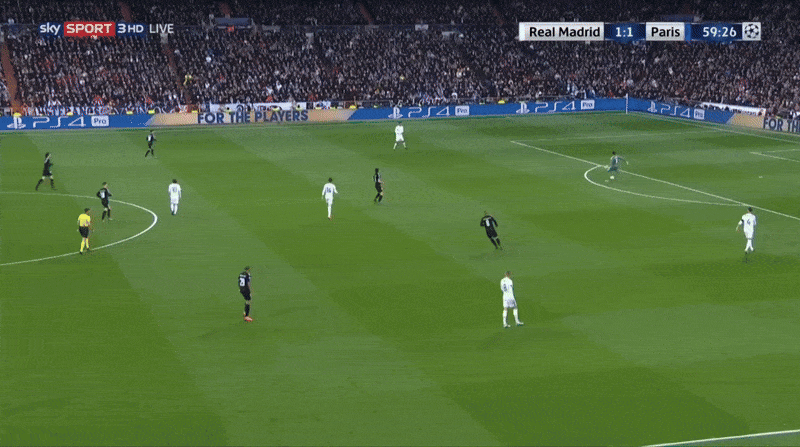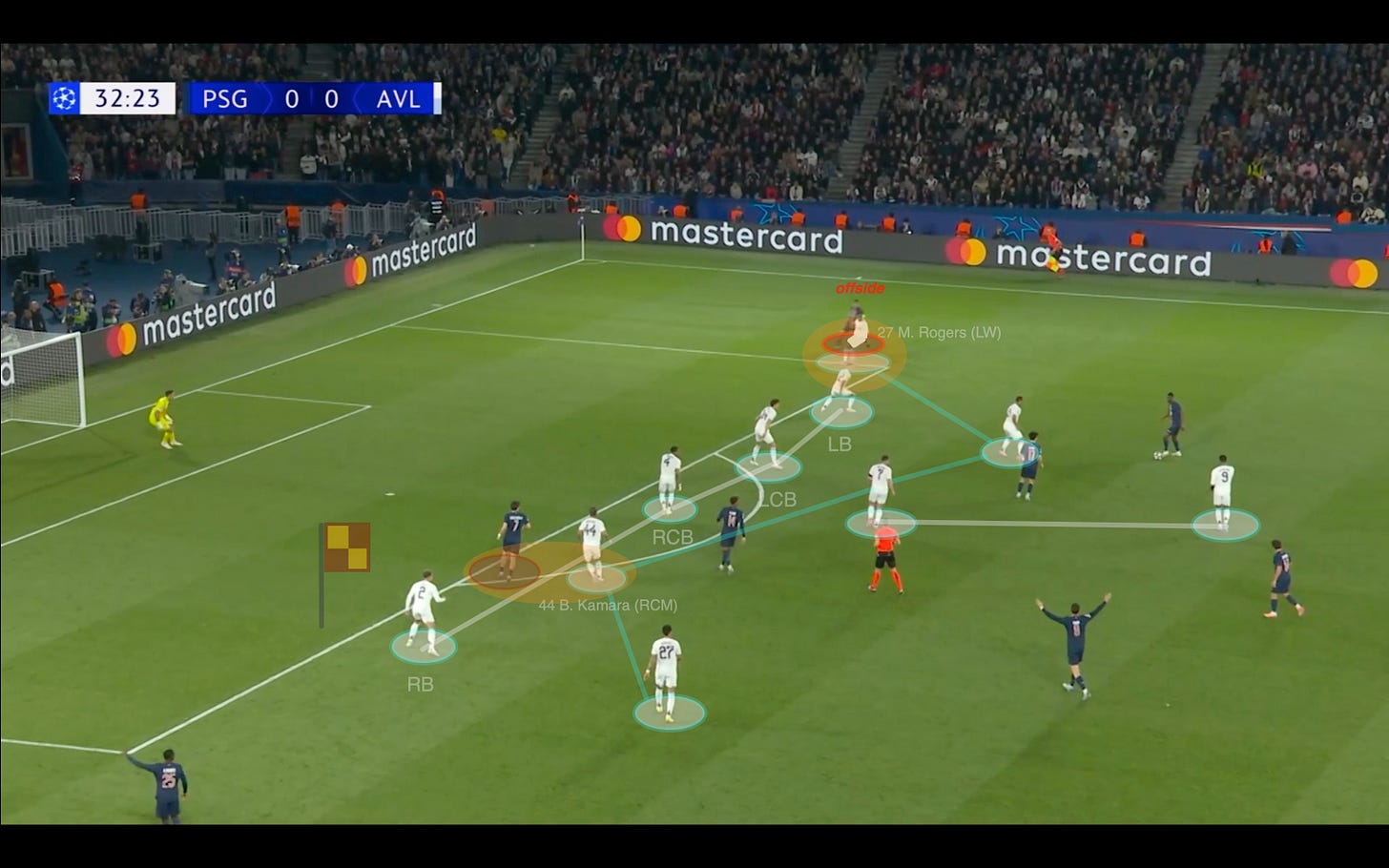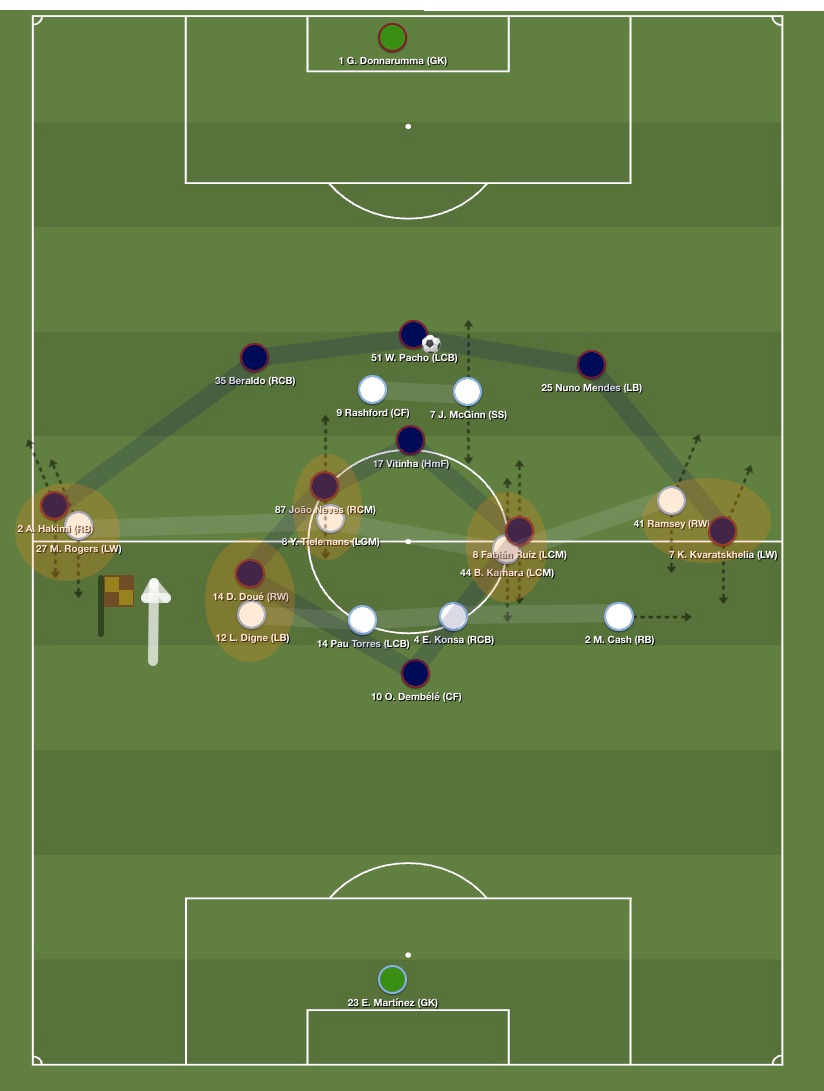[🇬🇧] PSG 3–1 Villa – Lucho shuts down Emery’s box, and tweaks his 6-2-2
english version of the post match analysis of PSG - Villa
While maintaining their usual manipulation ability, PSG only managed to break through Villa’s low block from open play in the 94th minute — not without thoroughly torquing Emery’s (intentional) 6-2-2. Without the ball, Paris clearly transformed their usual setup to deal with the Basque manager’s signature asymmetric midfield box. As the Villans already proceeded to a few in-game adjustments — both with and without possession — Emery’s men, who came close to taking home a strong result, now certainly know what they have to do in the second leg.
Emery’s Defensive Blueprint: A deliberate, and necessary, 6-2-2
We already saw glimpses of it at PSG (and it was at the core of his conflict with Thiago Silva) but from a structural (rather than tactical) standpoint, Unai Emery’s defensive philosophy has long pursued a compact, tight, zonal block, with a strong taste for the offside trap.
The first leg at the Bernabeu in 2018 and the 2017 League Cup final (where PSG’s defensive line frustrated Mbappé…) were explicit examples of this approach — a signature of the Basque coach.
In that trip to Madrid, while certain players received individual attention, none of them forced PSG’s block to bend out of shape to stick with them.
As seen below, two Madrid midfielders pushing forward (Isco and Modric) are picked up by two defenders. Modric continues his run and ends up offside. Emery only commits his back four to track these runs.
In the positional jungle of the Premier League — against the likes of Guardiola, Slot, and Arteta amongst others — Emery has slightly moved away from his structural ideal and clearly added a degree of “man-oriented” marking within his zonal system.
He still maintains a very vertically compact block. This means that managing the half-spaces no longer falls solely to the ball-side center-back (as Marquinhos did against Isco above), who would step out to pick up any runners.
Instead, the responsibility now lies with Villa’s defensive midfielders and wingers (in other words, the entire midfield line), who may be required to follow opposing runners — within the constraints of the 6-man back line’s alignment.
As a result — clearly visible in the section of this article about Arsenal’s offensive patterns against Villa — the Clarets often settle, in effect, into a 6-2-2. Players like Kamara, McGinn, or Onana often drop into the back line, while the fullbacks manage the width, or even the halfspace as the winger do.
Against adventurous fullbacks, we often see the wingers tucking in to form that line of 6.
The key nuance — or even contradiction — that PSG needed to target (and certainly did): these six defenders still have to stay coordinated, maintaining an offside line that’s supposed to catch opposition attackers making forward runs, as they would be stuck by Villa’s compact and aggressive shape when trying to receive Between the lines.
The offside line, of course, played a crucial role in how the first leg unfolded.
Depending on how well it was applied, the scoreline could easily have ranged from 1–1 to 4–1.
The theoretical matchups looked — or could have looked — like this:
PSG Overloads the Half-Spaces in a 3-1-6, with constant shifting
As previously analyzed, PSG’s “outside 5” players aim to stretch the defensive block, while the “inside 5” have more compact — even intentionally cramped — roles to facilitate combinations.
As they did against Liverpool at the Parc, Paris used this mechanism to overload the half-spaces, injecting constant rotations to prevent the Villans from locking onto clear reference points.
You can see it in PSG’s average positions: Right winger Doué (#14) positions himself even more centrally than center forward Dembélé (#10).
With movement from both the false nine and the right winger, PSG overloaded various areas with a consistent objective: to free up a player facing forward, able to play the killer through ball and break the offside trap — a much harder line to coordinate with six than with four elements.
On the right, PSG quickly sowed confusion by drawing Digne forward to track Doué, while also forcing Rogers (LW) to drop back to monitor Hakimi — whose threat in behind is far from imaginary.
Continuez votre lecture avec un essai gratuit de 7 jours
Abonnez-vous à PremiereTouche pour continuer à lire ce post et obtenir 7 jours d'accès gratuit aux archives complètes des posts.











